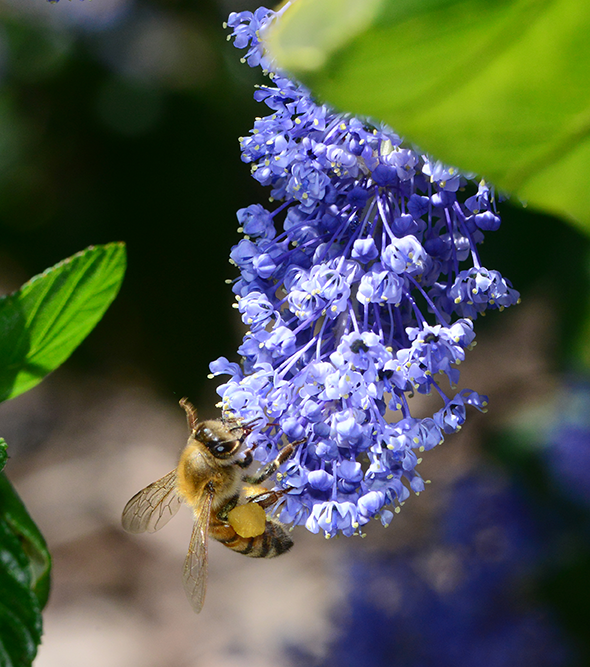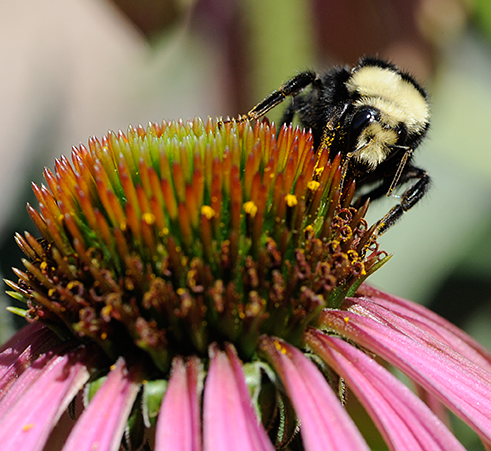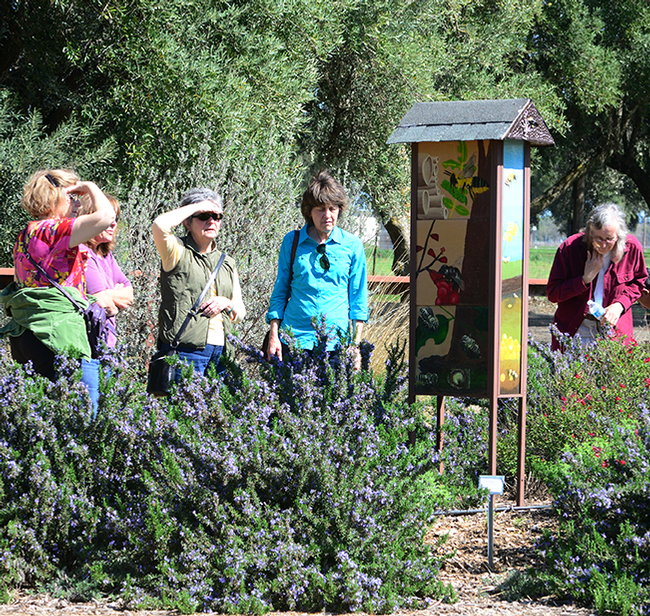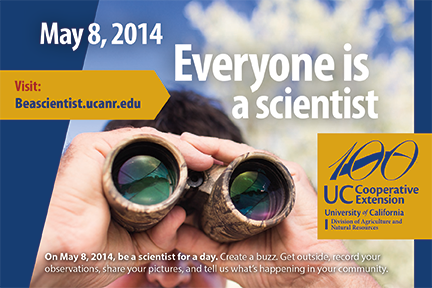Posts Tagged: day of science and service
Pollinators in trouble
On April 30, Barbara Allen-Diaz, vice president of the UC Division of Agriculture and Natural Resources, will wear bees – live honeybees. The event is a fundraiser for undergraduate education, and Allen-Diaz, who has endured bee stings in the past, is willing to take the risk for this important cause. She'll have the help of a noted bee wrangler, UC Davis emeritus professor of entomology Norm Gary. Gary has performed such unlikely stunts as playing the clarinet while covered with honeybees. He will apply a synthetic pheromone to Allen-Diaz's hands to attract the bees, which he says are unlikely to sting unless provoked.
“I'll be holding a precious resource in my hands, one that is essential to life on earth,” says Allen-Diaz. “I'll be placing my hands in Norm's hands to raise awareness about the value of honeybees.”
While raising money for education is certainly a worthy goal, as Allen-Diaz says, the event also draws attention to the plight of our most important agricultural pollinator. In 2006, a number of beekeepers in the Western U.S. noticed their hives had lost 30 to 70 percent of their worker bees. The phenomenon, now known as colony collapse disorder (CCD), is still not fully understood, though a number of factors are believed to be involved. They include habitat loss or degradation and fragmentation, poor nutrition, certain bee management and agricultural practices, natural and chemical toxins, diseases, and parasites. Any one of these factors can affect the insects' ability to combat any of the others. Isolating a single cause, if there is one, has proved elusive.
Many of the fruits and vegetables on the tables of the world are pollinated by insects, particularly bees, and if they were to disappear, our sources of plant food would be restricted to grains and not too much else. It's no wonder CCD is such a concern (for example, see the United Nations Environmental Program 2010 report on Global Bee Colony Disorder and USDA, Honey Bees and Colony Collapse Disorder.
It's not just honeybees, either. Pollinators in general are on the decline worldwide, probably for many of the same reasons that are listed as factors in CCD. They have an essential ecological function on every continent except Antarctica, not merely in service to agriculture. Losey and Vaughn (2006) estimate the value to the U.S. economy of native insects (not honeybees, which are native to Europe) to be at least $57 billion.
As human population grows and becomes more urban, and as habitats get more fragmented, it is no longer adequate to focus conservation efforts merely in non-urban, non-working landscapes.
“We need to figure out how to accommodate as many native species as possible in these kinds of places,” says Patrick Huber of the City of Davis Open Space and Habitat Commission, which has adopted pollinator habitat enhancement as a working goal. The Commission is working to compile a GIS dataset of known big patches of habitat in Davis, in order map pollinator resources around town.
Huber is a geographer in the Landscape Analysis and Systems Research lab at UC Davis, where he focuses on spatial scale in conservation planning. He is working on a tool to help match gardeners with plants that will grow well in their regions, that are locally available, and that provide a network of resources for pollinators throughout the urban landscape and on into the agricultural landscape. For the moment this project is being piloted in Davis, but the hope is to expand it to other communities, tying in resources such as CalFlora.
A recent workshop at UC Davis sponsored by the California Center for Urban Horticulture, Your Sustainable Backyard: Pollinator Gardening, focused on this very issue: what gardeners can do to help pollinators, many of which are bees. (Of 19,500 known bee species in the world, 4,000 can be found in North America and 1,600 in California. There are at least 300 species of bee in Yolo County alone.) Urban gardeners can help pollinators by:
- Planning for succession blooming (in the Central Valley, that means late winter through fall)
- Putting plants in clumps at least 4 feet long if possible (honeybees, especially, like to specialize)
- Putting in plants that provide both nectar and pollen (nectar is fuel for adult bees, pollen is protein for the young)
- Using native plants where possible; they're drought tolerant and have what our native bees need
- Avoiding most-toxic pesticides and herbicides
- Providing a clean source of water (a slow-dripping tap on a sloped surface is ideal; bees like to drink from very shallow sources)
- Providing cavity nest holes in wood for carpenter and other bees
- Leaving some areas of gardens unmulched for ground-nesting bees
There are ways the agricultural landscape can be made more hospitable, too. Neal Williams, professor of entomology at UC Davis, has been working on a project to install 600- to 800-meter plots of flowering plants alongside large fields as resources for pollinators. This has moved out of the trial phase into test plots in coastal and foothill areas as well as in the Central Valley.
Meanwhile, we can all help count our pollinators on May 8, the Day of Science and Service to celebrate 100 years of Cooperative Extension in California. We'll be conducting our own pollinator count here outside the ANR building in Davis: join us, or let us know about yours!
Many thanks to Kathy Keatley Garvey for use of her photos.




